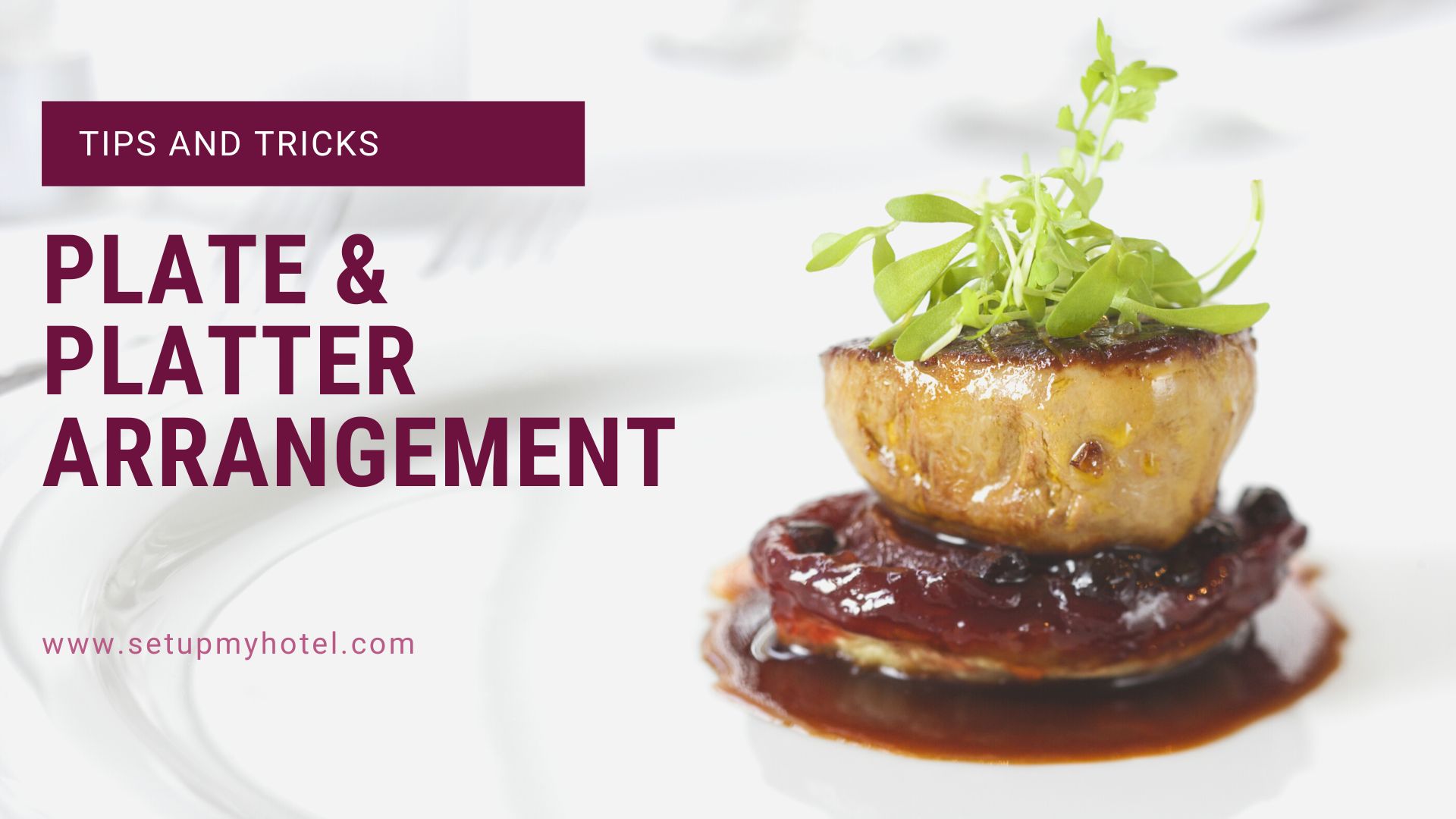Plate & Platter Arrangement Tips and Tricks For Chef’s
1. Keep food away from the plate’s rim. The meal is supposed to be in the well of the dish. If the amount of food on the plate is too much for the well, use a larger plate or lower the amount of food.
2. Arrange the food in a unified manner. The plate should resemble a single meal composed of multiple components. The meal should not be distributed across the entire dish. The center of the plate, not the edge, should draw the customer’s attention.
3. Arrange the food on the plate most attractively. For example:
- The best side of the meat forward.
- The back part of the duck or chicken half should face away from the customer.
- The bone of a chop should face away from the customer.
4. When utilized correctly, sauces can improve plate presentation. Do the following while placing the plates:
- Drizzle sauce on top of or around the dish.
- The sauce should not be used to hide or mask the products that are served with it.
- If you’re putting sauce on top of meat or vegetables, use a thin ribbon to add color and serve extra sauce on the side.
- Don’t use too much sauce. The sauce is supposed to enhance and compliment the flavor of food, not mask it.
- Sauces should be light and natural, rather than heavy and pasty.
5. Refrain from using the same pattern over and over again. Particularly for buffet presentation, variety in platter arrangement is as important as a colour variation.
6. Only add garnish if it’s essential. A garnish must be practical and solely applied to a plate or platter for balance.











